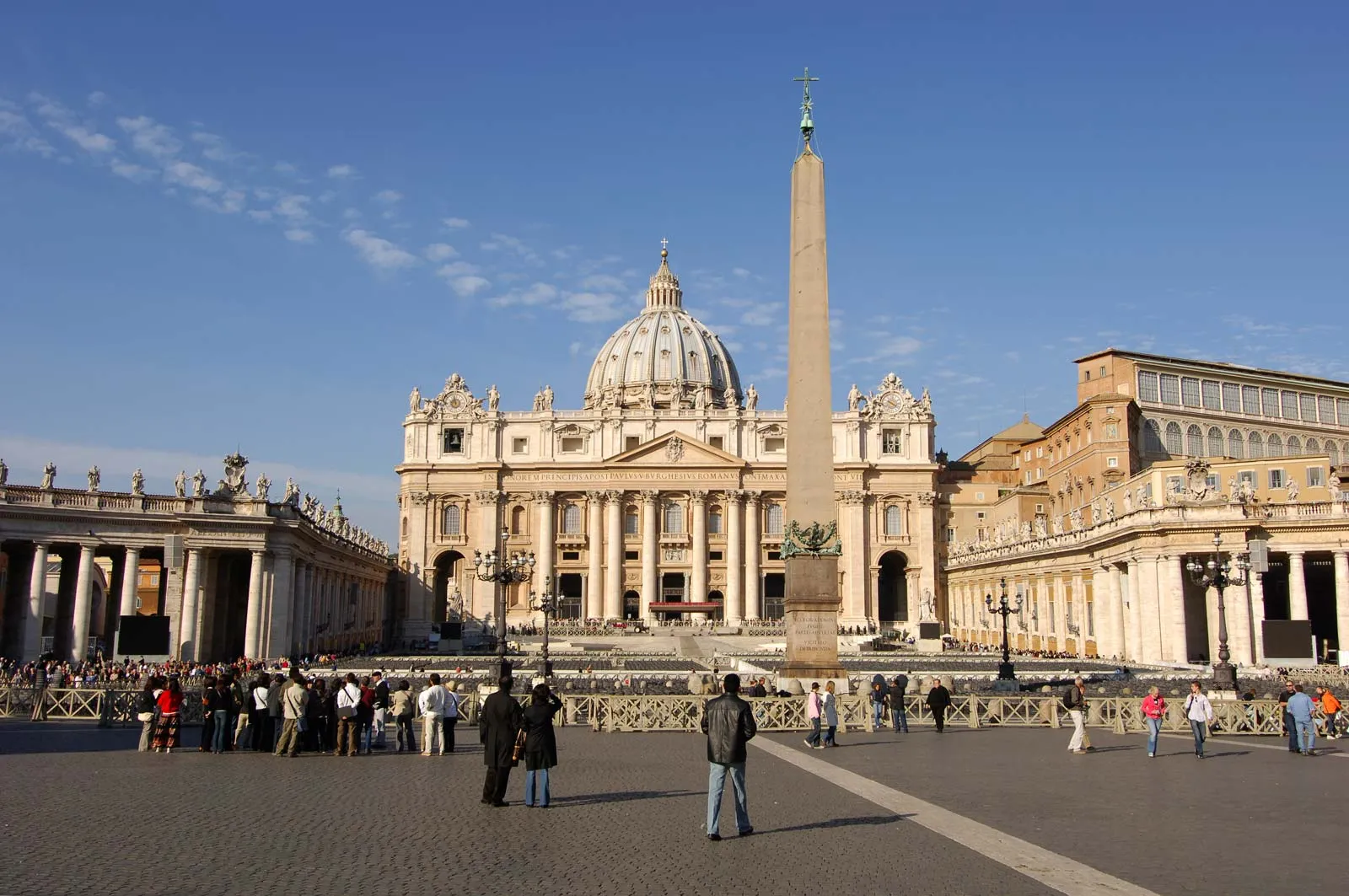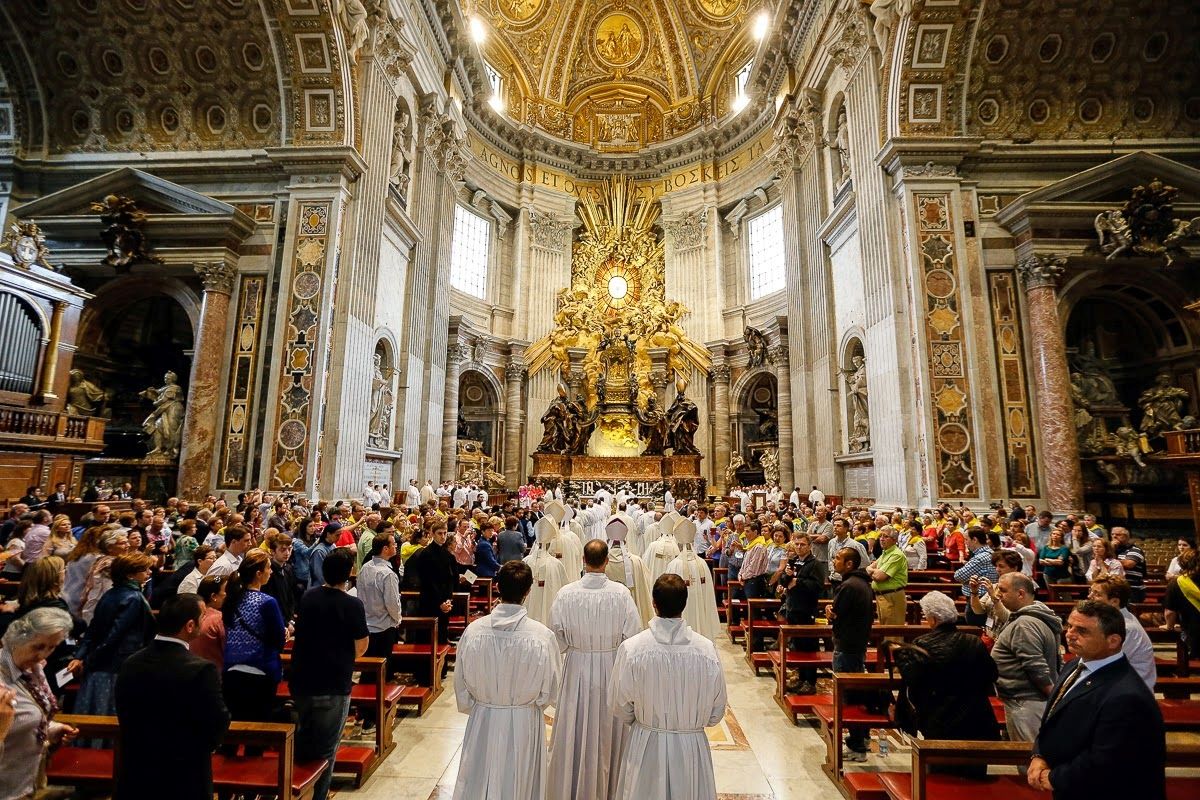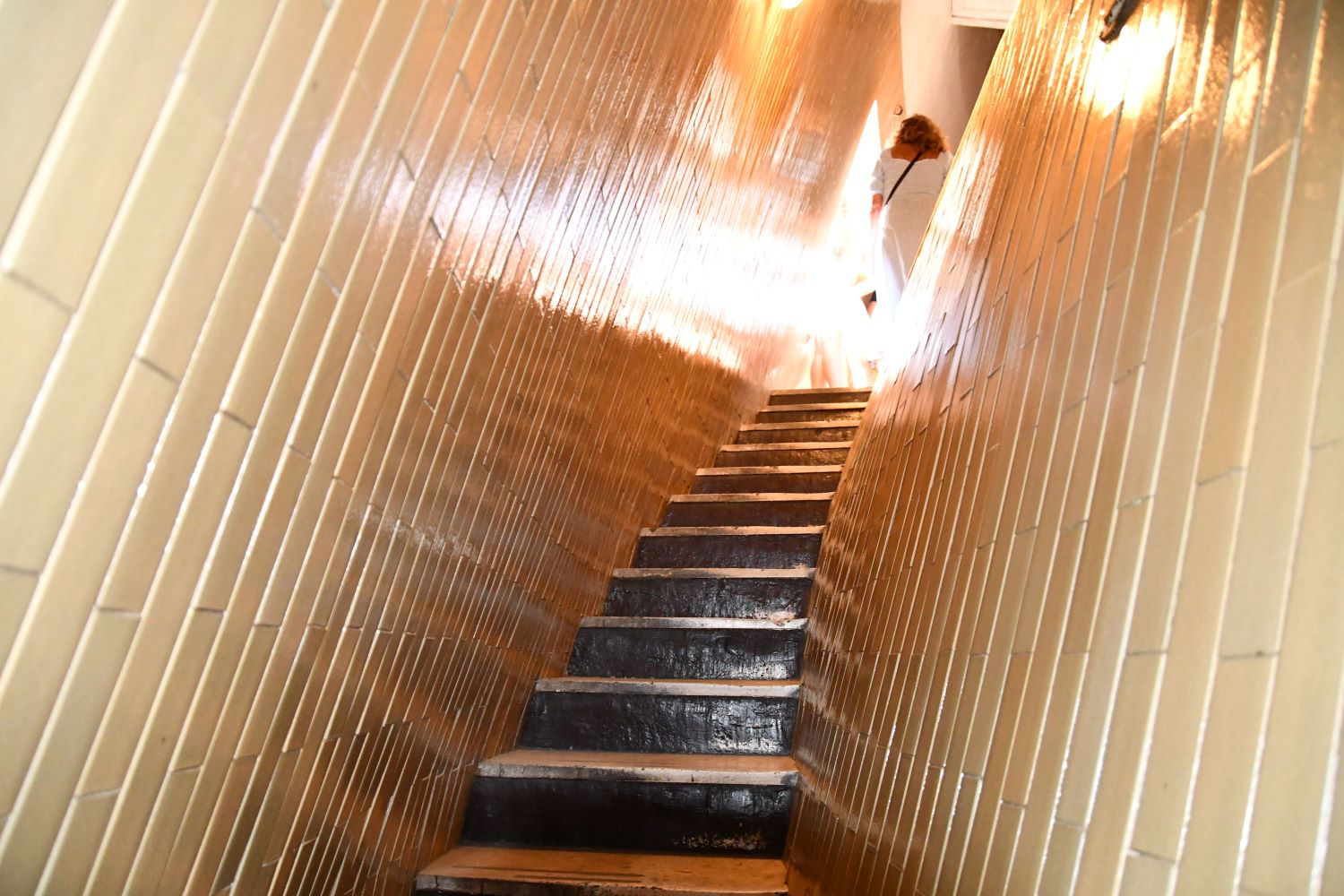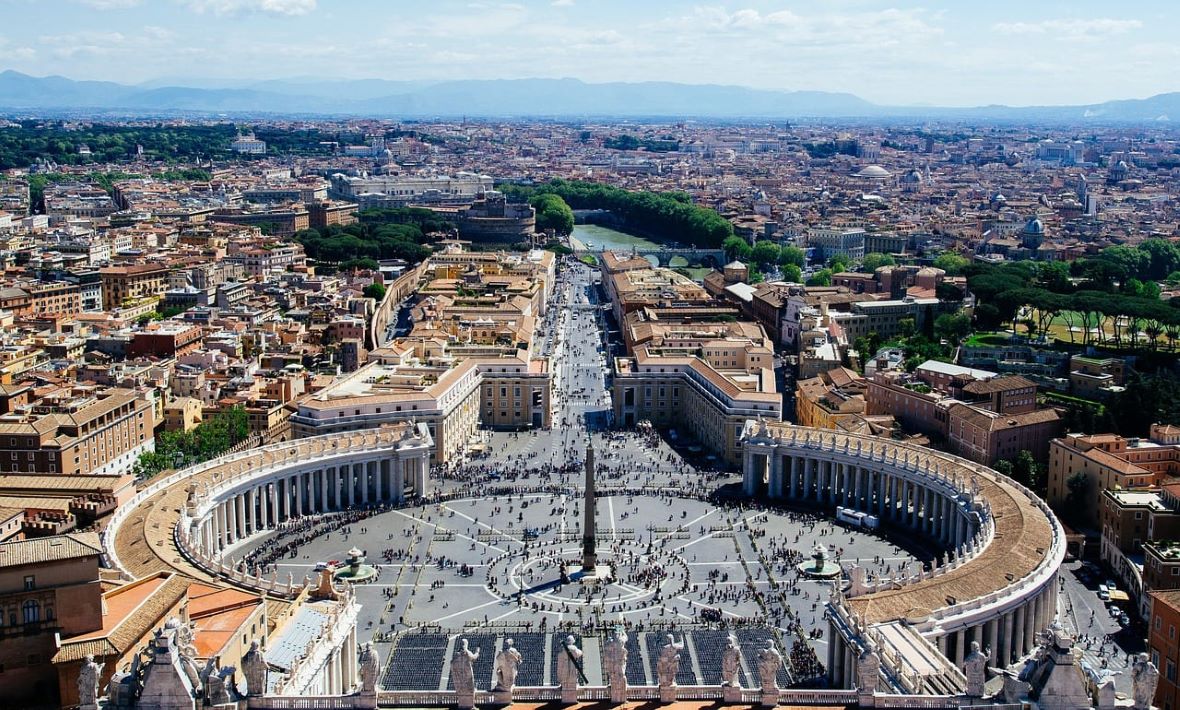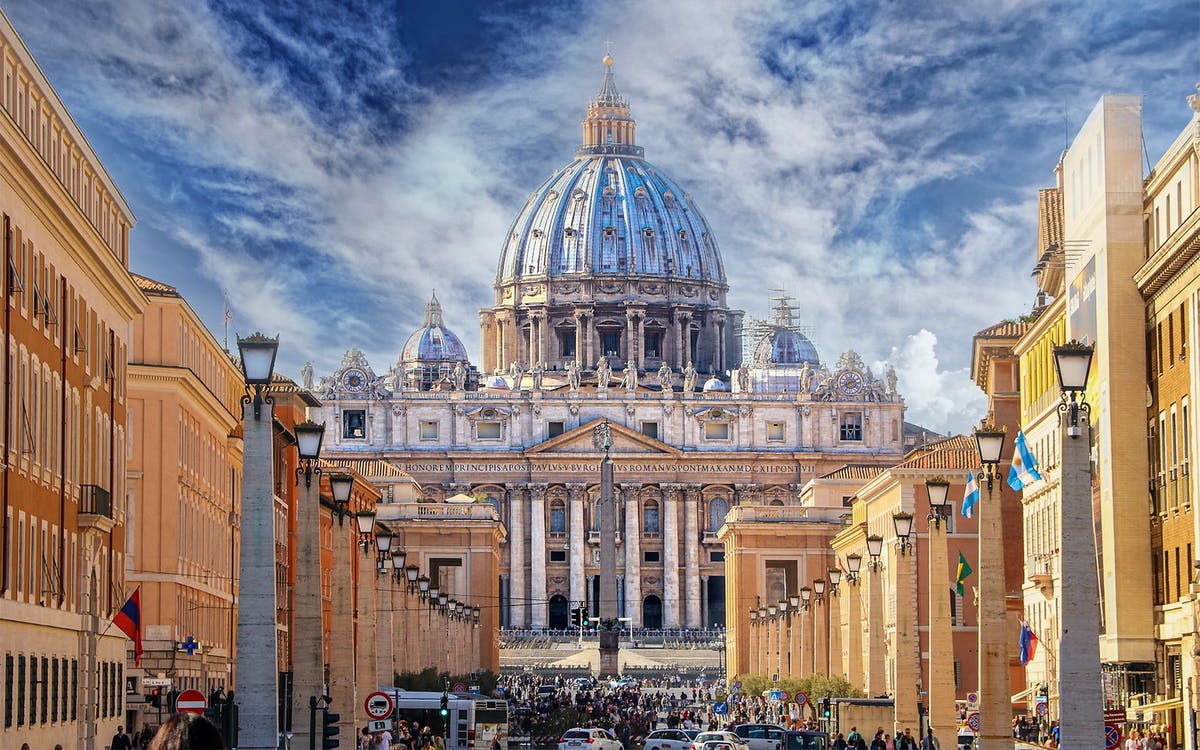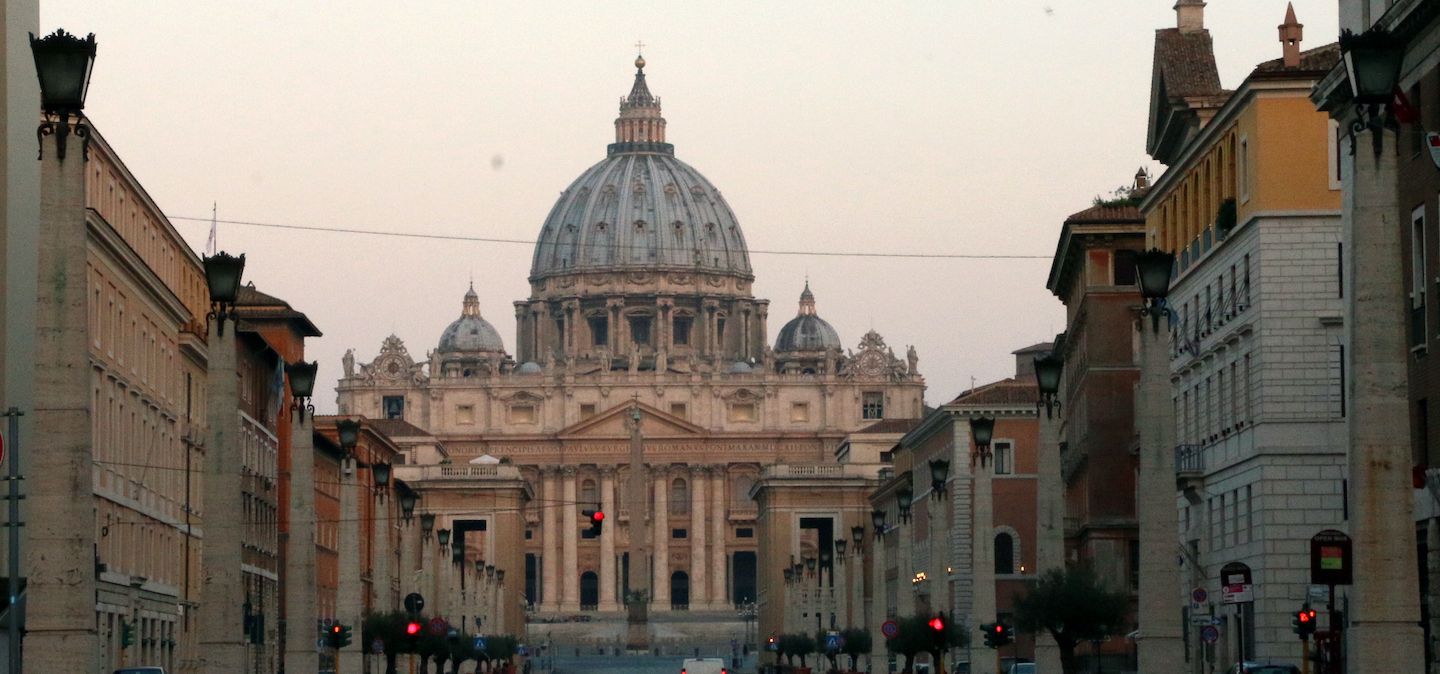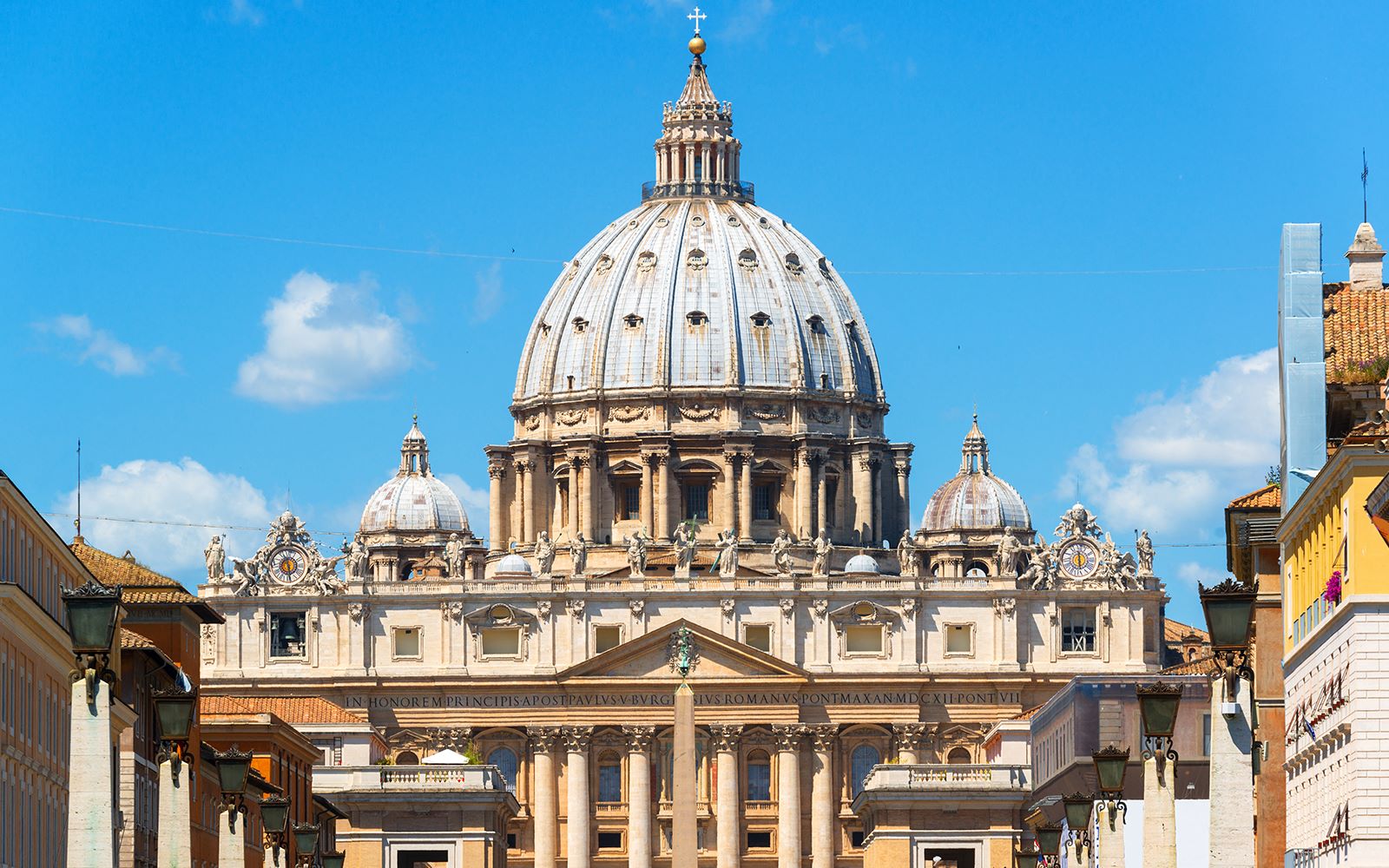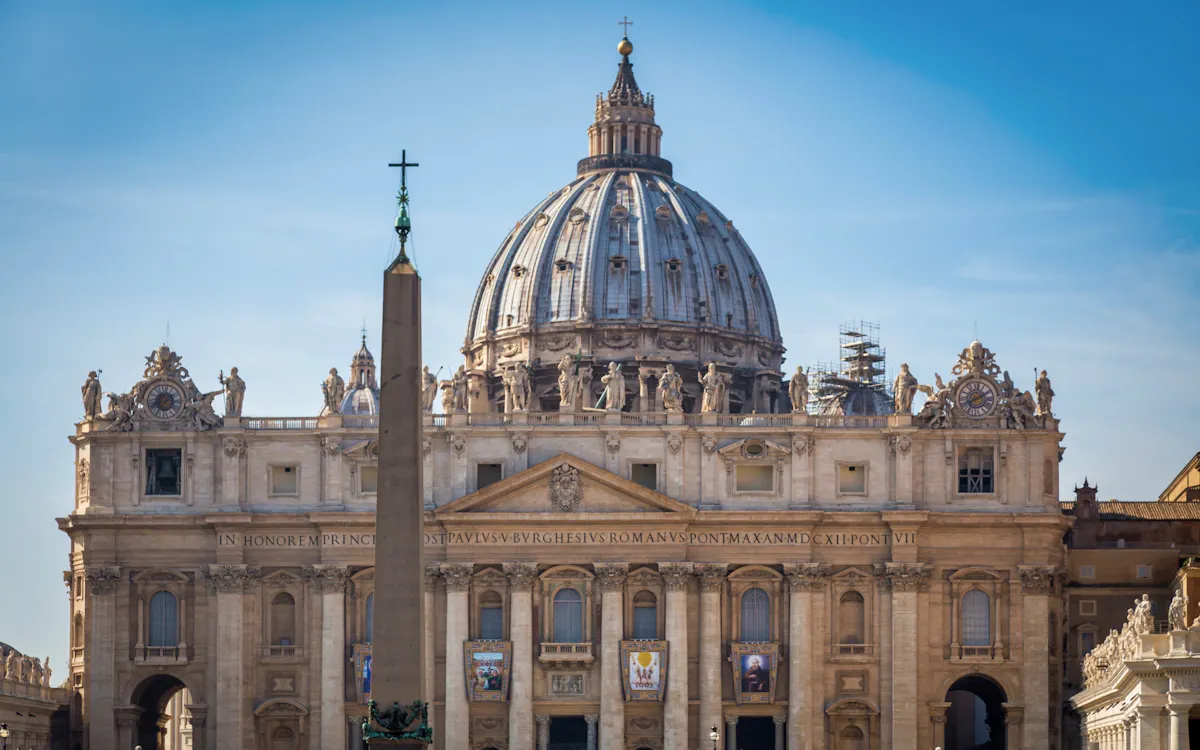Home>Arts and Culture>How Old Is St. Peter’s Basilica
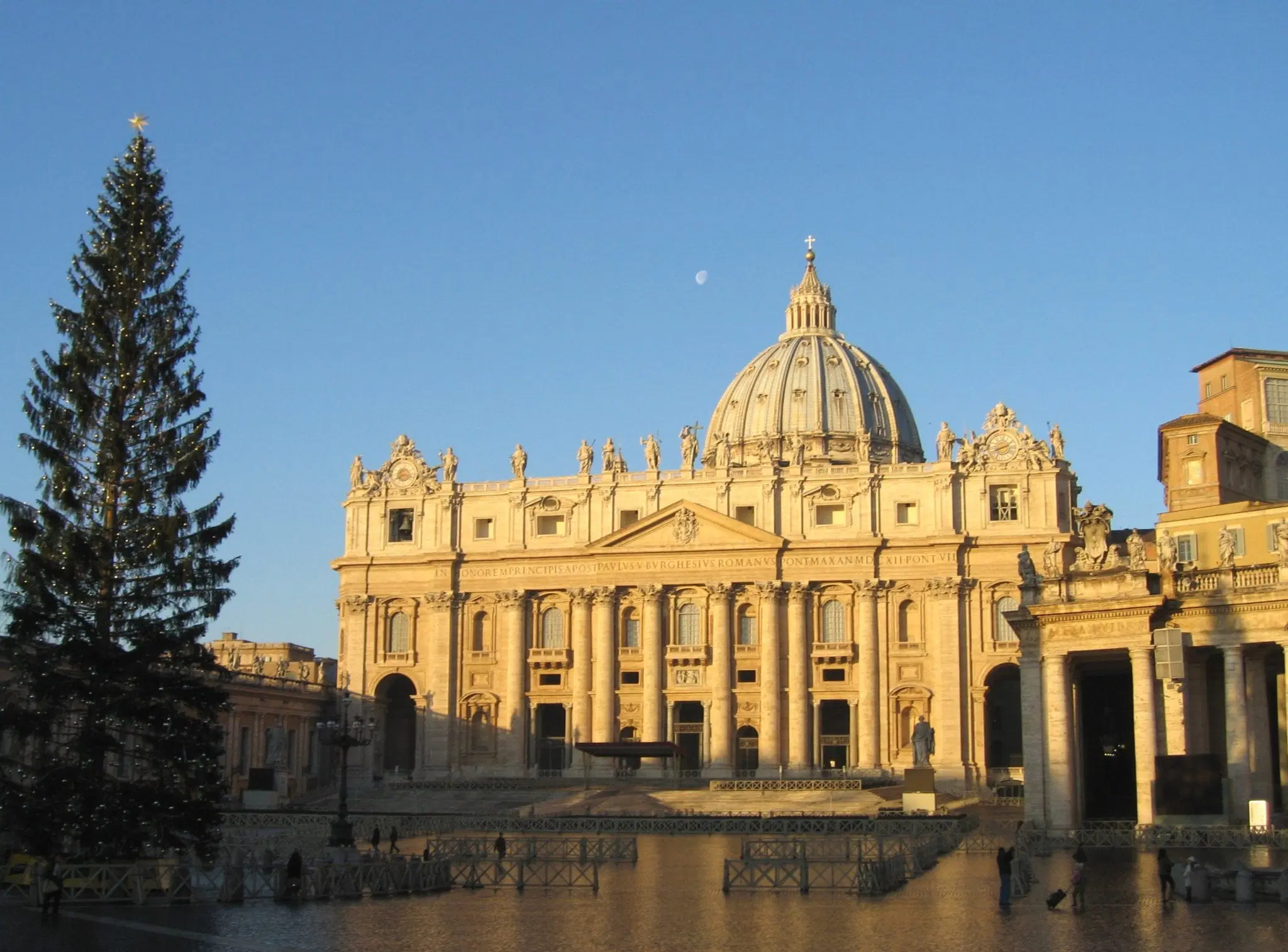

Arts and Culture
How Old Is St. Peter’s Basilica
Published: February 10, 2024
Ericka Andersen, an editor at Christian.net, expertly merges digital strategy with content creation, focusing on faith and societal issues. Her communication skills enhance the platform's engaging narratives, fostering meaningful dialogue on belief's impact on society.
Discover the rich history and age of St. Peter's Basilica, a masterpiece of arts and culture, as we explore its timeless significance and architectural marvels. Uncover the secrets of this iconic landmark and its enduring legacy.
(Many of the links in this article redirect to a specific reviewed product. Your purchase of these products through affiliate links helps to generate commission for Christian.net, at no extra cost. Learn more)
Table of Contents
Introduction
St. Peter's Basilica, an architectural marvel nestled in the heart of Vatican City, is a timeless symbol of grandeur and spiritual significance. This iconic structure, with its imposing dome and ornate façade, stands as a testament to the enduring legacy of the Catholic Church and the rich history of Western civilization. As one of the holiest sites for Catholics worldwide, St. Peter's Basilica draws millions of pilgrims and tourists each year, seeking to bask in its magnificence and soak in the aura of reverence that permeates its hallowed halls.
The basilica's significance extends beyond its religious importance, as it represents a pinnacle of Renaissance and Baroque art and architecture. Designed by renowned artists and architects such as Michelangelo, Gian Lorenzo Bernini, and Donato Bramante, St. Peter's Basilica stands as a living museum of artistic mastery and human ingenuity. Its awe-inspiring interior, adorned with masterpieces by the likes of Raphael and Caravaggio, serves as a testament to the enduring power of creativity and the pursuit of beauty.
Moreover, the basilica's location atop the ancient site where Saint Peter, one of the twelve apostles of Jesus, was believed to have been buried, adds a layer of historical and spiritual significance that transcends its architectural splendor. The basilica's very existence is intertwined with the narrative of Christianity, making it a living chronicle of faith, perseverance, and the enduring human quest for transcendence.
As we delve into the history, construction, and age of St. Peter's Basilica, we embark on a journey through time, unraveling the layers of art, spirituality, and human endeavor that have shaped this monumental edifice. Join us as we explore the captivating story behind one of the world's most revered architectural wonders, and discover the profound impact it has left on the cultural tapestry of humanity.
Read more: Why Is St. Peter’s Basilica Important
History of St. Peter's Basilica
The history of St. Peter's Basilica is a tapestry woven with threads of faith, ambition, and artistic brilliance. Its origins can be traced back to the 4th century, when the first basilica was commissioned by Emperor Constantine. This early iteration of the basilica served as a monumental tribute to the martyrdom of Saint Peter, who was crucified on the Vatican Hill, where the basilica now stands. The basilica was designed to enshrine his tomb and became a focal point for early Christian pilgrimage and worship.
Over the centuries, the original basilica underwent several transformations and faced the ravages of time and conflict. However, it wasn't until the 15th century that the grand vision of a new St. Peter's Basilica began to take shape. In 1506, Pope Julius II laid the foundation stone for the current basilica, marking the commencement of a monumental undertaking that would span generations.
The construction of the new basilica was a testament to the artistic and engineering prowess of the Renaissance era. Visionary architects and artists, including Donato Bramante, Michelangelo, and Gian Lorenzo Bernini, contributed their genius to the design and embellishment of the basilica, infusing it with the spirit of the Renaissance and Baroque movements.
The basilica's construction was not without its challenges. The sheer scale of the project, coupled with the complexities of engineering a dome of unprecedented size, presented formidable obstacles. However, the unwavering dedication of the artisans and the patronage of successive popes propelled the construction forward, resulting in the creation of a structure that transcended the boundaries of architectural achievement.
The history of St. Peter's Basilica is also intertwined with the political and religious dynamics of the time. The basilica's construction served as a potent symbol of the Catholic Church's authority and its commitment to preserving the legacy of Saint Peter. It also reflected the grandeur and opulence of the papal court, projecting the power and influence of the Vatican onto the world stage.
As we delve into the annals of St. Peter's Basilica, we encounter a saga of resilience, creativity, and unwavering devotion. The history of this sacred edifice mirrors the evolution of Western civilization, encapsulating the triumphs and tribulations of humanity's quest for spiritual fulfillment and artistic expression.
Construction of St. Peter's Basilica
The construction of St. Peter's Basilica stands as a testament to human ingenuity, artistic mastery, and unwavering determination. The monumental task of erecting this architectural marvel began in 1506, under the patronage of Pope Julius II. The ambitious project aimed to replace the aging Constantinian basilica with a structure that would surpass it in magnificence and grandeur.
The initial phase of the construction was entrusted to the esteemed architect Donato Bramante, who envisioned a design that would harmonize the principles of classical architecture with the spirit of the Renaissance. Bramante's plan centered on creating a Greek cross layout for the basilica, with a massive dome crowning the intersection of the transept and nave. This innovative design represented a departure from the traditional Latin cross floor plan of medieval churches, signaling a bold leap into a new era of architectural expression.
Following Bramante's tenure, the reins of the project passed into the hands of a succession of brilliant minds, including Raphael and Antonio da Sangallo the Younger, each contributing their unique vision to the evolving design. However, it was the indomitable spirit of Michelangelo, the revered sculptor and architect, that left an indelible mark on the basilica's construction. Michelangelo, renowned for his masterpieces such as the Sistine Chapel ceiling, took on the formidable task of overseeing the basilica's construction in his later years.
One of the most iconic elements of St. Peter's Basilica, the majestic dome, posed a formidable engineering challenge. Michelangelo, drawing inspiration from the Pantheon's dome in Rome, envisioned a structure that would soar to unprecedented heights. His innovative solutions, including the use of double shells and lightweight materials, paved the way for the realization of a dome that would stand as a crowning achievement of architectural innovation.
The completion of St. Peter's Basilica's construction was a collaborative effort that spanned over a century, involving the contributions of illustrious architects, engineers, and artisans. The basilica's façade, adorned with intricate carvings and statuary, reflects the Baroque embellishments added by Gian Lorenzo Bernini, infusing the structure with a sense of theatrical grandeur and opulence.
The construction of St. Peter's Basilica stands as a testament to the human spirit's capacity to transcend limitations and create enduring monuments that inspire awe and reverence. Its completion marked the dawn of a new era in architectural and artistic achievement, leaving an indelible imprint on the cultural landscape of humanity.
Renovations and Additions
The illustrious history of St. Peter's Basilica is punctuated by a series of renovations and additions that have enriched its architectural splendor and preserved its cultural legacy. Over the centuries, the basilica has undergone significant modifications and embellishments, each bearing the imprint of the artistic and technological advancements of its respective era.
One of the most notable renovations occurred during the 16th and 17th centuries, under the guidance of eminent architects and artists. Gian Lorenzo Bernini, the prolific Baroque sculptor and architect, left an indelible mark on the basilica with his transformative additions. His architectural prowess and artistic vision manifested in the embellishment of the basilica's interior, including the awe-inspiring Baldacchino, a monumental bronze canopy that rises above the high altar. This majestic structure, adorned with intricate details and symbolic elements, stands as a testament to Bernini's mastery and remains a focal point of reverence within the basilica.
The grandeur of St. Peter's Basilica was further enhanced by the addition of the monumental St. Peter's Square, a sweeping colonnaded plaza designed by Gian Lorenzo Bernini. The expansive embrace of the colonnades, symbolizing the motherly arms of the Church, creates a sense of awe and reverence as visitors approach the basilica, setting the stage for a profound spiritual experience.
In the centuries that followed, St. Peter's Basilica continued to undergo renovations and restorations to address structural concerns and preserve its architectural integrity. Notably, in the 20th century, comprehensive restoration efforts were undertaken to safeguard the basilica's structural stability and artistic treasures. These meticulous endeavors aimed to address issues such as water infiltration, pollution-induced damage, and the preservation of priceless artworks, ensuring that the basilica would continue to inspire and captivate future generations.
The enduring legacy of St. Peter's Basilica is a testament to the harmonious fusion of tradition and innovation, as each renovation and addition has honored the basilica's rich heritage while embracing the spirit of artistic evolution. These interventions have not only preserved the structural magnificence of the basilica but have also elevated its status as a living testament to the enduring power of human creativity and devotion.
The story of St. Peter's Basilica's renovations and additions is a testament to the enduring spirit of preservation and innovation, ensuring that this architectural masterpiece continues to stand as a beacon of inspiration and a testament to the timeless pursuit of beauty and transcendence.
Age of St. Peter's Basilica
The age of St. Peter's Basilica is a chronicle of centuries, each leaving an indelible mark on the architectural masterpiece that stands today. The inception of the basilica can be traced back to the early 4th century when Emperor Constantine commissioned the construction of the original basilica atop the burial site of Saint Peter. This initial iteration of the basilica served as a testament to the burgeoning influence of Christianity and the enduring legacy of the apostle, marking the genesis of a sacred edifice that would evolve through the annals of time.
The subsequent centuries witnessed a series of transformations and reconstructions, each bearing the imprint of the prevailing artistic and architectural sensibilities. However, it was the dawn of the Renaissance that heralded a new chapter in the basilica's history. In 1506, Pope Julius II laid the foundation stone for the current basilica, signaling the commencement of a monumental endeavor that would span over a century.
The construction of the new basilica, helmed by visionary architects and artists such as Donato Bramante, Michelangelo, and Gian Lorenzo Bernini, unfolded against the backdrop of artistic and cultural renaissance. The basilica's evolution mirrored the shifting paradigms of architectural design and engineering, culminating in the creation of a structure that transcended the boundaries of its time.
The completion of St. Peter's Basilica in the 17th century marked the culmination of a prodigious artistic and engineering feat, encapsulating the collective genius of generations. The basilica's age is not merely a measure of time but a testament to the enduring spirit of human creativity and devotion. It embodies the aspirations and achievements of countless artisans, architects, and patrons who contributed to its magnificence, each leaving an indelible legacy within its hallowed walls.
Today, as St. Peter's Basilica stands in all its resplendent glory, its age serves as a bridge between the epochs, connecting the modern world to the rich tapestry of history and heritage. It stands as a living testament to the enduring power of human endeavor, inviting visitors to embark on a journey through time and immerse themselves in the legacy of faith, art, and cultural evolution that defines this architectural marvel.
The age of St. Peter's Basilica transcends mere numbers, embodying the essence of human ingenuity and the timeless pursuit of beauty and transcendence. It stands as a monument to the enduring legacy of the Catholic Church and a beacon of inspiration for generations to come.
Read more: Who Designed St. Peter’s Basilica
Conclusion
In conclusion, the story of St. Peter's Basilica transcends mere architectural significance; it embodies the collective aspirations, triumphs, and creative genius of humanity across the ages. From its humble origins as a tribute to the apostle Saint Peter to its evolution into a monumental Renaissance and Baroque masterpiece, the basilica stands as a living chronicle of faith, art, and cultural evolution.
The history of St. Peter's Basilica is a testament to the enduring spirit of human endeavor, resilience, and devotion. It has weathered the tides of time, bearing witness to the ebb and flow of history while standing as an enduring symbol of spiritual transcendence. The basilica's construction, marked by the contributions of visionary architects and artists, reflects the pinnacle of artistic and engineering achievement, leaving an indelible imprint on the cultural landscape of humanity.
Moreover, the age of St. Peter's Basilica serves as a bridge between epochs, connecting the modern world to the rich tapestry of history and heritage. It beckons visitors to embark on a journey through time, inviting them to immerse themselves in the legacy of faith, art, and cultural evolution that defines this architectural marvel. As the basilica continues to inspire awe and reverence, it stands as a testament to the enduring power of human creativity and the timeless pursuit of beauty and transcendence.
St. Peter's Basilica, with its resplendent dome, awe-inspiring interior, and storied past, remains a beacon of inspiration for pilgrims, art enthusiasts, and visitors from across the globe. Its age is not merely a measure of time but a testament to the enduring spirit of human creativity and devotion. It embodies the aspirations and achievements of countless artisans, architects, and patrons who contributed to its magnificence, each leaving an indelible legacy within its hallowed walls.
As we bid farewell to the captivating narrative of St. Peter's Basilica, we carry with us the echoes of centuries past, the whispers of artistic genius, and the enduring legacy of faith. The basilica stands as a testament to the enduring legacy of the Catholic Church and a beacon of inspiration for generations to come, inviting all to partake in its timeless allure and profound significance.
